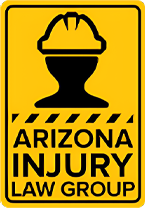|
|
Last Modified on May 16, 2023

Climate scientists are all but unanimous in their predictions of continued rising temperatures and longer duration of warm seasons. Nowhere in the United States are these phenomena of greater concern than in Arizona. Whatever one’s opinion regarding climate change or its causes, temperatures above 100 degrees in April have become routine, and in 2016 and 2017 several Arizona cities posted record highs.
Public health warnings tend to stress the danger high temperatures pose to vulnerable populations, such as the elderly or chronically ill. However, also at risk are workers who spend a substantial portion of their workday outdoors, particularly in direct sunlight.
Obvious examples are workers whose duties are invariably performed outdoors, such as roofing contractors and agricultural workers, but others such as airport baggage handlers and emergency first responders are also at risk. Workers who have not become acclimatized to higher temperatures, such as newly hired and temporary employees or those returning after significant time off, are at greater risk.
SYMPTOMS AND TREATMENT
COMMON SYMPTOMS OF HEAT EXHAUSTION INCLUDE:
- Profuse sweating.
- Confusion or disorientation.
- Dehydration (dark-colored urine is a symptom)
- Dizziness or fainting.
- Excessive fatigue.
- Headaches.
- Muscle or abdominal cramps.
- Nausea, vomiting, or diarrhea.
Treatment includes moving the sufferer to the shade or other cooler location, application of cool towels and gradual ingestion of fluids. Although most heat exhaustion victims recover, they can experience increased sensitivity to heat for about a week.
If not treated promptly, heat exhaustion can lead to heat stroke, which occurs when the body’s temperature reaches 104°F. Heat stroke is far more serious than heat exhaustion and, if left untreated, can lead to irreversible organ damage and even death. If a victim has slipped into heat stroke, his or her body will stop trying to cool itself through perspiring. As such, a telltale sign of heat stroke is the absence of perspiration. If heat stroke is suspected, emergency medical assistance must be called immediately.
PREVENTION
Prevention of heat-related illness is a shared responsibility. The Occupational Safety and Health Administration recommends that employers provide air-conditioned or shaded break rooms or other “respite” locations and ensure that workers take regular breaks to cool down.
Managers and workers alike should be trained to recognize the symptoms of heat exhaustion and heat stroke in themselves as well as in their fellow workers.
Whenever feasible, the most strenuous work should be scheduled for early morning and late afternoon when temperatures are lower.
Employers should provide and require the use of items such as cooling vests and drinking water stations.
Employees and managers with smartphones should consider installing OSHA’s Heat Safety Tool application
Employees should be aware of their own limits and should be reminded to take precautions, such as wearing loose-fitting light-colored clothing and regularly consuming small amounts of water throughout the day.






